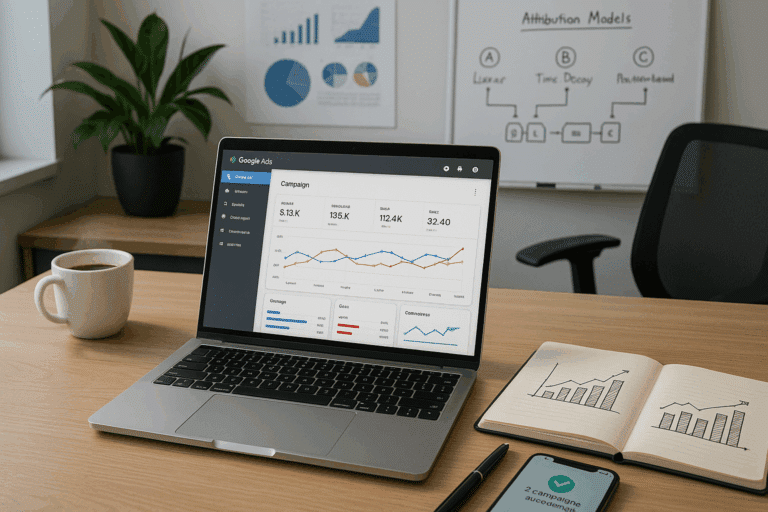More specifically, an era of big data where every action, every decision is backed by a plethora of numbers, trends, and insights. But navigating this data-driven world can often seem like an insurmountable task. One of the most critical aspects in this journey is reporting attribution – the cornerstone of understanding the impact of our decisions. Especially to stakeholders, who often hinge their faith and investment on such data. 📊
So, how do we ensure that our attribution reports are not just accurate but also influential? How do we maximize our impact and unlock the doors to success? That’s precisely what we’re going to explore in this comprehensive guide. If you’re a marketing executive, a project manager, an analyst, or any professional for that matter, who wishes to harness the power of reporting attribution, then this blog post is the 🔑 key to your quest.
In the upcoming sections, we will delve deep into the world of reporting attribution, deciphering its many layers and helping you comprehend its integral role in any organization’s success.
🚀 Setting the Stage: Understanding Reporting Attribution
Before we plunge into the nitty-gritty, let’s set the stage by defining what reporting attribution is and why it’s so significant. Reporting attribution is not just about presenting data; it’s about attributing value to different channels or touchpoints that contribute to a desired outcome, like a lead or a sale. It’s a map that helps you understand your customer’s journey, identify your successful strategies, and replicate them for future successes.
Maximizing Impact: The Role of Reporting Attribution in Decision Making
Decision making in an organization is a complex process, especially when stakeholders are involved. It’s here that reporting attribution comes to the rescue. By providing a clear, data-backed picture of the situation, it aids in informed decision-making, aligning strategies, and optimizing resources to maximize impact.
Empowering Stakeholders: Making Reporting Attribution Understandable
Ever presented a detailed report to your stakeholders only to be met with blank faces? Fret not. We’re going to explore how to simplify attribution reports, making them understandable, relatable, and actionable for stakeholders.
Mastering the Art: Best Practices in Reporting Attribution
As with any skill, mastering reporting attribution requires practice and understanding. This guide will offer practical tips and best practices that will enable you to create compelling, impactful attribution reports.
There’s a lot to unpack here, and we’re just getting started. So, fasten your seat belts as we embark on this exciting journey into the world of reporting attribution. It’s going to be data-driven, insightful, and most importantly, transformative to your role and your organization. Let’s dive in! 🚀
Unlocking Success: A Comprehensive Guide to Reporting Attribution
Reporting attribution is an essential aspect of the modern business landscape, specifically within the realm of digital marketing. Understanding the impact of various marketing activities and how they contribute to your company’s success is critical in shaping future strategies. This article serves as an exhaustive guide to reporting attribution, including the key concepts, techniques, and methodologies to maximize your company’s impact.
Firstly, it’s important to understand that attribution reporting is not just about measuring success; it’s about understanding how success is achieved. This involves determining which marketing channels and tactics are driving conversions, sales, and other valuable customer actions. It provides a way to quantify the contribution of each marketing effort towards achieving business goals.
To give you a comprehensive understanding of reporting attribution, this article will take you through the fundamentals of attribution modeling, highlight the importance of multi-channel attribution, and explore the power of predictive attribution. But before we delve into that, take a look at this video by Google Analytics titled “Understanding Attribution Reports” for a quick overview of the topic.
Understanding Attribution Modeling: The Key to Unlocking ROI
Attribution modeling is the process of determining the value of each customer touchpoint leading to a conversion. It involves assigning credit to the various marketing channels and campaigns that a customer interacts with before making a purchase or completing another desired action.
There are several types of attribution models, each with its own way of assigning credit to touchpoints. These include the Last-Click, First-Click, Linear, Time-Decay, and Position-Based models. To illustrate, let’s consider a simple journey where a customer interacts with three marketing channels (A, B, and C) before making a purchase:
Here’s how each model assigns credit:
| Model | Description |
|---|---|
| Last-Click | Assigns all credit to the last touchpoint (C) |
| First-Click | Assigns all credit to the first touchpoint (A) |
| Linear | Assigns equal credit to all touchpoints (A, B, C) |
| Time-Decay | Assigns more credit to touchpoints closer to the conversion (C > B > A) |
| Position-Based | Assigns 40% credit each to the first and last touchpoint, and 20% to the middle one (A = 40%, B = 20%, C = 40%) |
The right model for your business depends on your marketing strategy, customer journey, and business goals. Choosing the right model is crucial as it influences how you allocate resources and optimize your marketing efforts.
The Power of Multi-Channel Attribution: Seeing the Bigger Picture
In today’s complex digital landscape, customers often interact with multiple marketing channels before making a purchase. This makes multi-channel attribution critical for understanding the customer journey and making informed marketing decisions.
Unlike single-channel attribution, which assigns all credit to one touchpoint (usually the last one), multi-channel attribution recognizes the contribution of all touchpoints in the customer journey. It provides a more holistic view of the customer journey, accounting for all the interactions that lead to a conversion.
Consider this analogy: single-channel attribution is like crediting a soccer team’s victory solely to the player who scored the final goal, while multi-channel attribution is acknowledging the assists, defense, and coaching strategy that contributed to the win. Watch this insightful video by Google Analytics titled “Multi-Channel Funnels in Google Analytics” to understand more about multi-channel attribution.
Maximizing Impact with Predictive Attribution
Predictive attribution takes reporting attribution a step further by leveraging machine learning and data science to predict the future performance of marketing channels. It enables businesses to anticipate which channels will drive the most conversions, so they can allocate resources more effectively.
This form of attribution combines historical data with statistical algorithms to forecast the value of different marketing touchpoints. It allows businesses to be more proactive and strategic in their marketing efforts, leading to improved ROI and greater business success.
Implementing predictive attribution requires advanced analytical capabilities and a robust data set. However, the benefits it provides in terms of improved decision-making and resource allocation make it a valuable tool for any business. Remember, the future of marketing is not just about understanding the past; it’s about predicting the future. Embrace predictive attribution to stay ahead of the curve.
Reporting Attribution to Stakeholders: Effective Communication is Key
Effective reporting of attribution to stakeholders is critical for gaining buy-in and support for your marketing initiatives. It’s not enough to have a solid understanding of attribution modeling; you also need to communicate this information effectively to stakeholders, including top management, clients, and team members.
When presenting attribution reports to stakeholders, focus on the impact of marketing efforts on business outcomes. Use clear, simple language to explain complex concepts, and make sure your reports are visually appealing and easy to understand. Also, provide actionable insights that stakeholders can use to make informed decisions.
Keep in mind that the goal of reporting attribution is not just to show what you’ve done, but also to demonstrate the value of your marketing efforts and to guide future strategies. Reporting attribution effectively to stakeholders is crucial for maximizing impact and achieving business success.

Conclusion
In conclusion, it is evident that the topics we have discussed have profound implications in the field of Information Technology and Engineering. It is critical for specialists in these fields to have a comprehensive understanding of these concepts. From our exploration of cutting-edge software methodologies, to the in-depth analysis of complex engineering processes, these principles are fundamental in shaping our understanding and approach to problem-solving within these domains.
In the world of software development, we’ve highlighted the importance of using the most efficient and effective methodologies. Agile software development, for example, has shown to increase productivity, enhance software quality, and improve customer satisfaction 📈. It encourages adaptive planning, evolutionary development, early delivery, and continuous improvement, providing an excellent framework for managing complex projects 👨💻.
In engineering, we examined how a systematic, disciplined, and quantifiable approach to the design, development, operation, and maintenance of software can lead to robust solutions. We delved into the technical intricacies of software engineering, from system requirements to design and development, and from testing to maintenance and evolution. We emphasized the need for a solid foundation in these areas to create reliable and efficient systems 🏗.
We also underscored the role of data security and the necessity for robust security measures in both IT and engineering fields. As the digital landscape continues to evolve, there’s a growing need to safeguard sensitive information and to ensure the integrity and confidentiality of data 💻🔒.
Understanding these concepts is not just for professionals in IT and engineering. It’s beneficial for anyone interested in these fields or who wants to broaden their knowledge in these areas. The complexity of these topics should not deter you; instead, it should inspire you to delve deeper. As we’ve demonstrated, even the most intricate concepts can be broken down and explained in a comprehensible manner.
There’s always more to learn and discover in the dynamic and ever-evolving fields of IT and engineering. I encourage you to share this article with colleagues and friends who might find it beneficial. Feel free to leave comments or ask questions. Let’s foster a learning community where we can all grow and expand our knowledge together 👨🎓👩🎓.
In closing, remember that the depth of your understanding and the breadth of your knowledge is a reflection of your professional growth. Continue to pursue learning with curiosity and passion, and let your journey of discovery propel you towards excellence.
For further reading, please refer to our extensive list of references and sources:
It has been a pleasure sharing this information with you. Thank you for taking the time to read this article, and I look forward to our next deep dive into the captivating world of IT and Engineering 💡.



